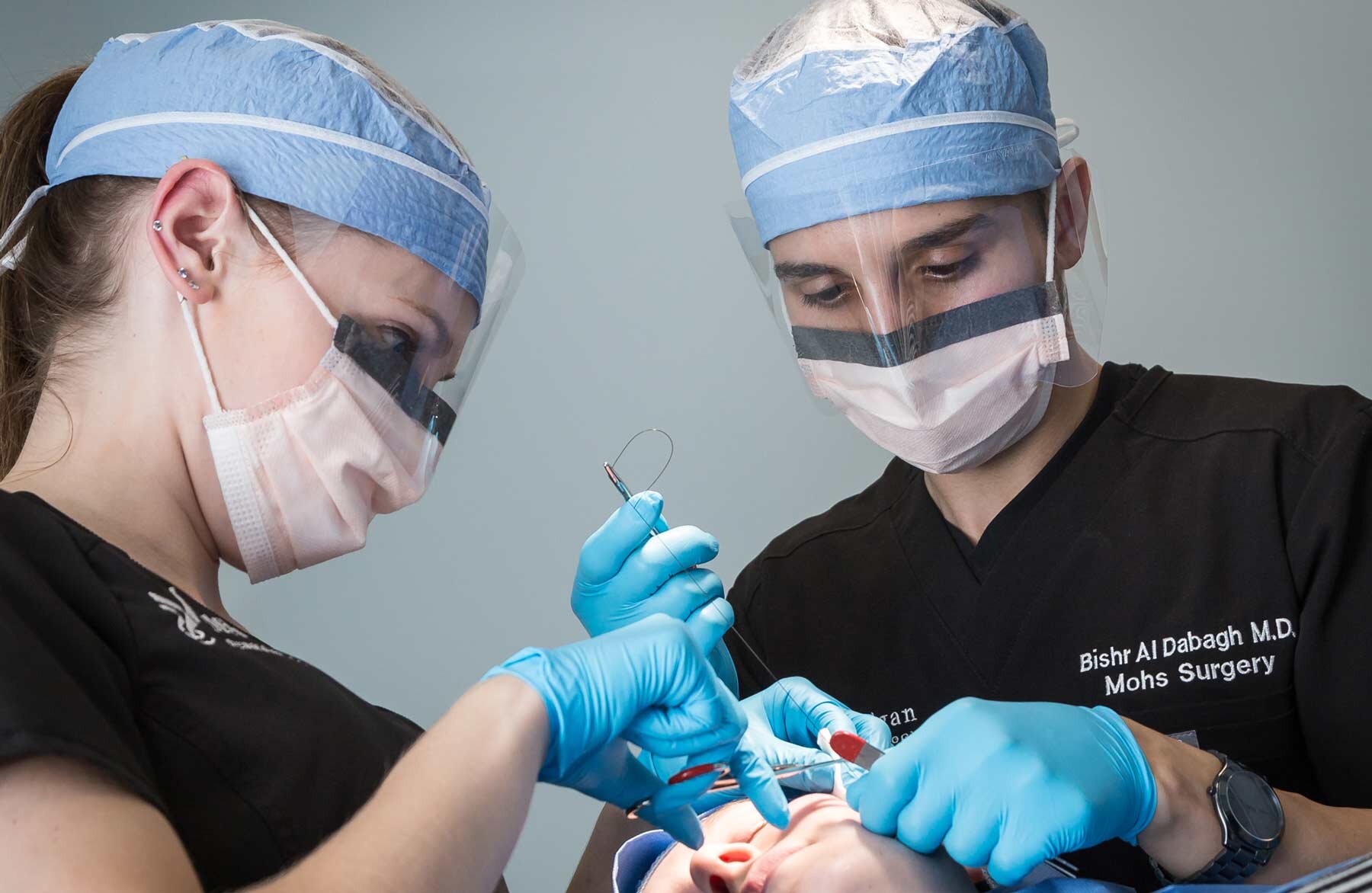
Skin Cancer
A General Overview, Prevention, and Quick Facts
Skin cancer is the most common type of cancer in the United States. While the sun is the main cause, sunlamps and tanning booths can also result in skin cancer. Anyone can get skin cancer, regardless of their skin color. However, individuals with fair skin and freckles are at highest risk. Skin cancer can be cured if caught early before it spreads to other parts of the body.
Skin cancer is divided into three types: basal cell carcinoma, squamous cell carcinoma, and melanoma.
Basal and squamous cell carinomas are typically found on sun-exposed skin (such as face, head, neck, hands, and arms), but can occur anywhere on the body. These two subtypes grow slowly and rarely spread to other organs. Melanoma, the third type, is the most dangerous. They are less common but are lethal as they can spread to other parts of the body.
A dermatologist can perform a skin check screen for skin cancer. It is also important that you or your partner check your skin once a month for signs of cancer. Look for any suspicious changes including a new growth, a non-healing sore, or a bleeding mole. Skin cancer is rarely painful.
Check to see if a birthmark or mole has:
A
Asymmetry
Does one side look different from the other?
B
Borders
Borders are irregular, not smooth
C
Color
Color changes, or more than one color
D
Diameter
Width larger than the size of a pencil eraser
E
Evolution
Has it changed in size, shape, or color? Any new symptoms (itching, tenderness, bleeding)?
If you notice any of the above, call your dermatologist right away to have an expert opinion.
How to perform a skin exam at home
How To Keep Your Skin Healthy
How can you keep your skin healthy and glowing?
Limit your time outside. Some sunlight is good for you but try to avoid the sun during peak hours of sunlight from 10am to 2pm. Don’t let cloudy skies fool you, as sunlight can penetrate through clouds. You can also get sunburned in the water, so take caution when you enjoy a pool, lake, or ocean.
Use sunscreen. Apply a broad-spectrum sunscreen with SPF 30 or higher, about 15-30 minutes before going outside. Reapply every 2 hours. You need to reapply more often if you are swimming, sweating, or rubbing your skin with a towel.
Wear protective clothing. A wide-brim hat can shade your eyes, ears, neck, and head. Sunglasses should prevent practically all the sun’s rays (99-100%). If you have to be under the sun, wear lightweight, loose, long-sleeved shirts and long pants or skirts.
Avoid tanning. Sunlamps and tanning beds are harmful and should be avoided. Tanning pills might not be safe and are NOT approved by the U.S. Food and Drug Administration (FDA).
Our skin changes as we age, but remember there are things we can do to keep it healthy. Limit sunlight and check your skin often. If any change concerns you, contact your dermatologist.
Quick Facts from the Surgeon General
Skin cancer is the most commonly diagnosed cancer in the United States, with 5 MILLION PEOPLE treated each year.
Melanoma is the deadliest form of skin cancer. Every year, there are more than 63,000 new cases, resulting in nearly 9,000 deaths.
Anyone can get skin cancer. Although light skinned individuals have a higher risk of developing skin cancer, people with darker skin are often diagnosed with skin cancer at a later stage, making it difficult to treat.
More than 1 out of every 3 Americans reports getting sunburned each year. Sunburn is a clear sign of over-exposure to UV (ultraviolet) rays and a major cause of skin cancer.
Every year, indoor tanning in the United States is related to more than 400,000 cases of skin cancer (about 6,000 of these are melanomas).
Tanned skin is damaged skin, yet nearly 1 out of every 3 young white women engages in indoor tanning each year.
Sun protection strategies that work:
Wear a hat, sunglasses, and other protective clothing. Seek shade, especially during midday hours (10am to 2pm).
Use broad spectrum sunscreen with SPF 30+ to protect any exposed skin. Sunscreen is most effective when combined with other methods and when reapplied as directed above.
Learn More
Skin Cancer: Quick Facts from the Surgeon General.” Office of the Surgeon General. US Department of Health and Human Services. 8 August 2014. https://www.hhs.gov/surgeongeneral/reports-and-publications/skin-cancer/fact-sheet/index.html.
Skin Care and Aging.” National Institute on Aging. National Institutes of Health, part of the U.S. Department of Health and Human Services. 1 Oct. 2020. https://www.nia.nih.gov/health/skin-care-and-aging
https://www.mayoclinic.org/diseases-conditions/skin-cancer/symptoms-causes/syc-20377605




